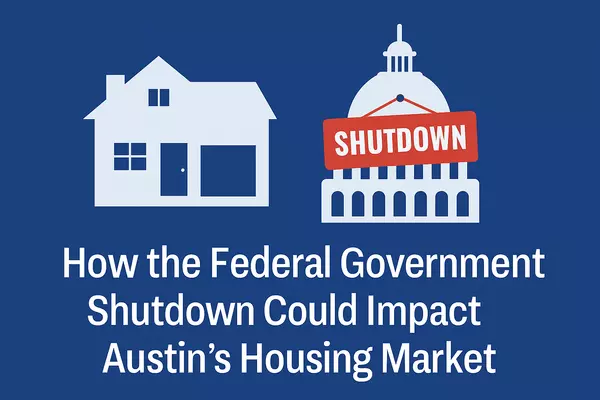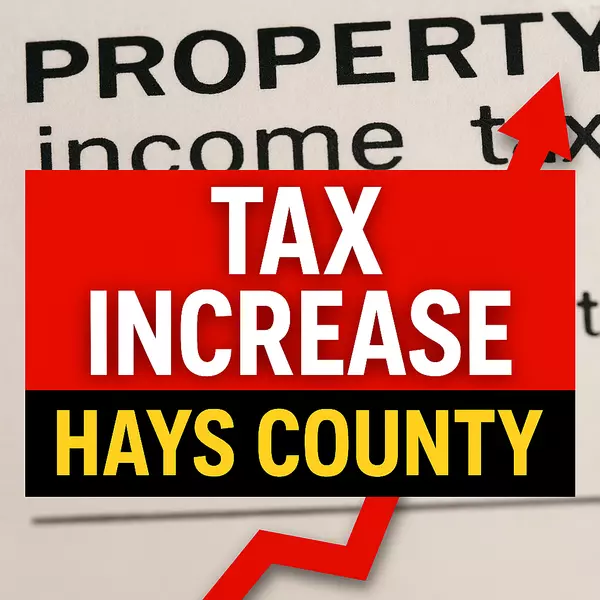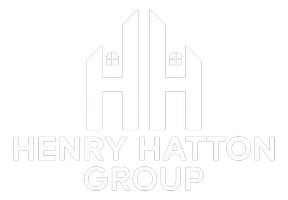Deflation of Austin's Housing Market

Deflation of Austin's Housing Market
What the data says and what that means for you!
When My Client Sarah's Dream Home Became a Reality: Understanding Austin's Shifting Real Estate Landscape
Sarah Mitchell had been watching the Austin housing market from her cramped downtown apartment for three years. Like thousands of others who flocked to Texas's capital during the tech boom, she'd seen bidding wars send home prices soaring 60% between 2020 and 2022. Month after month, she watched her dream of homeownership slip further away as sellers received multiple offers and homes sold within days—often for tens of thousands over asking price.
But when Sarah started her house hunt again in October 2025, something felt different. Homes were staying on the market longer. Sellers were more willing to negotiate. The frenzied energy that once defined Austin's real estate scene had given way to something more measured, more balanced. For the first time in years, Sarah had choices—and leverage.
The Cooling Market: What's Really Happening in Austin
Austin's real estate market is experiencing a significant transformation in 2025, shifting from one of the nation's hottest seller's markets to what experts now characterize as a buyer's market. The numbers tell a compelling story of change.
As of November 2025, the median home price in Austin sits around $451,000 to $497,815, depending on the data source—representing a decline of approximately 6.8% year-over-year. This marks a dramatic shift from the market's peak, when prices seemed to know no limits. Homes that were valued at $450,000 earlier this year could be worth $431,000 by May 2026 based on current forecasts, potentially saving patient buyers $19,000.
The inventory picture has changed just as dramatically. Austin currently has approximately 11,484 to 15,634 active listings as of October and November 2025, with months of inventory reaching 7.1 months—well above the national average of 5.0 months. When inventory exceeds six months, the market typically transitions to favor buyers, giving them negotiating power that hasn't existed in Austin for nearly a decade.
Perhaps most telling is how long homes are sitting on the market. The median days on market reached 79.5 days in October 2025, compared to just 46 days in May of the same year. In some neighborhoods, particularly downtown Austin and urban core areas like the 78701 and 78704 zip codes, inventory has climbed to 9-11+ months, creating particularly strong buyer leverage.

Decoding the Metrics: What Buyers and Sellers Need to Know
Understanding key real estate metrics can mean the difference between making an informed decision and leaving money on the table. Here are the essential terms shaping today's Austin market:
Months of Inventory represents how long it would take to sell all available homes at the current sales pace. A balanced market typically has 4-6 months of supply. Austin's 7.1 months signals a buyer's market, meaning buyers have more choices and negotiating
Sale-to-List Ratio measures what percentage of the asking price homes actually sell for. In Austin, homes are now selling for about 97.8% of list price, meaning the average home sells for 2.2% below asking. Even more striking, 72.2% of homes are selling below list price, while only 11.5% receive offers above asking—a dramatic reversal from the bidding war days when multiple offers routinely pushed prices higher.
Days on Market (DOM) indicates how quickly homes are selling. Austin's current 79.5 days represents a significant slowdown from previous years, giving buyers time to conduct thorough inspections, secure financing, and negotiate without the pressure of competing offers.
Active Listings refers to the total number of homes currently available for sale. With over 11,000-15,000 homes on the market, buyers have exponentially more choices than they did during the pandemic years when inventory was measured in the low thousands.
Price Cuts reveal seller motivation and market direction. Currently, 58% of Austin listings have reduced their asking prices, indicating that sellers are adjusting expectations to match buyer demand—a clear sign of a cooling market.
For sellers, the Close-to-List Ratio of approximately 93% in many Austin neighborhoods means pricing competitively from the start is critical. Overpriced homes languish on the market, often requiring multiple price reductions that can stigmatize a listing.
The Perfect Storm: Why Austin's Market Shifted
Multiple factors converged to cool Austin's once-blazing market. Mortgage rates, which hovered around 6.16% to 6.22% in November 2025, remain more than double the pandemic-era lows of 2-3%. This translates to over $800 more per month on a typical $400,000 loan compared to 2020 rates, significantly impacting buyer purchasing power.
The tech sector, which fueled much of Austin's explosive growth, has contracted. The information technology sector shed 2,900 jobs in 2024, representing a 5.7% decline. Major employers like Tesla, Oracle, and Meta are still present, but the massive hiring sprees that drove population booms have slowed considerably.
Population growth has also decelerated. Austin added just 4,005 residents between 2023 and 2024—a mere 0.4% increase, the smallest among Texas's five largest cities. The domestic migration that once accounted for 60% of Austin's growth now represents just 25%, though international migration has picked up the slack.
Meanwhile, new construction has continued at a rapid pace. Austin ranked 9th nationally for new home construction in 2025, with 3,889 new building permits issued in just the first two months of the year. This surge in supply, combined with moderating demand, has created the inventory glut that now defines the market.
How Jason Henry Realtor Navigates This New Landscape
In this transformed market, expertise matters more than ever. While the frenzy of bidding wars has subsided, successfully buying or selling a home in Austin's current environment requires sophisticated market knowledge, negotiation skills, and strategic positioning.
For Buyers, Jason Henry Realtor provides the insights needed to capitalize on this rare opportunity. With detailed analysis of neighborhood-specific inventory levels—from the 9-11 months in downtown's 78701 to the more balanced 5.5 months in Williamson County—buyers receive targeted guidance on where negotiating power is strongest. Understanding which sellers are motivated, how to leverage inspection findings for credits and concessions, and when to ask for rate buydowns or closing cost assistance can save buyers tens of thousands of dollars.
The firm helps buyers navigate the 1,420 new construction homes currently available, where builders are offering incentives and pricing new homes at a 7.2% discount compared to existing homes—a rare reversal of typical pricing dynamics. Knowing when to pursue resale properties versus new construction, and how to negotiate builder incentives, requires current market intelligence that only a dedicated local expert can
For Sellers, pricing strategy has never been more critical. With 72.2% of homes selling below asking price and 58% of listings requiring price reductions, getting the initial pricing right is essential. Jason Henry Realtor conducts comprehensive comparative market analysis using the most current data, accounting for how homes in specific price ranges and neighborhoods are actually performing—not how sellers hope they'll perform.
The firm implements staging and presentation strategies that make homes stand out in a crowded market where buyers have choices. With homes sitting on the market for an average of 79.5 days, maintaining buyer interest throughout the listing period requires proactive marketing, strategic price positioning, and understanding buyer psychology in a market where urgency has evaporated.
Perhaps most importantly, Jason Henry Realtor provides realistic expectations. Sellers who remember the market of 2021-2022 may struggle to accept today's reality. Having an agent who can present data-driven pricing recommendations, explain current market dynamics with clarity, and position properties competitively from day one prevents the costly mistake of chasing the market down with multiple price reductions.
The Neighborhoods Where Opportunity Knocks Loudest
Market conditions vary significantly across Austin's diverse neighborhoods. Central Austin (78704, Zilker/Bouldin Creek area) and downtown (78701) show elevated supply levels with 9-11+ months of inventory, creating particularly strong buyer leverage. These urban core properties, especially high-rise condos, present opportunities for negotiation on price, HOA credits, and seller concessions.
Williamson County maintains 5.5 months of inventory with a median price of $419,995, down 1.6% year-over-year. Hays County shows 5.2 months of inventory at a median of $365,000, down 4.6%. Bastrop County, with 7.5 months of inventory and a median of $336,749 (down 2.7%), represents an opportunity for buyers priced out of Travis County.
The suburban markets of Georgetown, Leander, and Round Rock continue growing, with these communities adding tens of thousands of residents since 2020. These areas offer newer construction, higher-rated school districts, and more space—factors that remain attractive even as the broader market cools.
Looking Ahead: What 2026 Holds
Market forecasts suggest continued modest price declines through 2026, with projections ranging from -1.8% to -4.2% depending on the source. The market is expected to stabilize sometime in 2026, entering a period where prices remain relatively flat or grow modestly at 1-3% annually.
By 2028-2030, analysts predict Austin will settle into a sustainable long-term growth pattern with 3-5% annual appreciation—a healthier pace that allows wages to catch up and prevents market overheating. The days of 20%+ annual gains are over, replaced by a more predictable, stable foundation.
For buyers, this means the window of opportunity is now. Waiting for the absolute bottom is a fool's errand; finding the right home at a fair price in a market where you have negotiating power is the smart strategy. For sellers, realistic pricing and strategic marketing will separate successful sales from properties that linger unsold.
Your Next Move: Partner with Expertise
Whether you're like Sarah, finally ready to pursue homeownership after years of watching from the sidelines, or you're a seller navigating this transformed landscape, the Austin market of late 2025 requires expertise, current data, and strategic execution.
The difference between a good outcome and a great one often comes down to having the right guidance. Understanding whether a home priced at $525,000 in your target neighborhood represents fair value or is overpriced by $40,000. Knowing whether to offer $475,000 or $495,000 based on days on market, comparable sales, and seller motivation. Recognizing which inspection findings warrant credits and which don't provide leverage.
Ready to see how Jason Henry Realtor can help you navigate Austin's real estate market in 2025?
Whether you're buying your first home, selling a property in this shifting market, or relocating to Austin from another city, schedule a consultation today. We'll provide a personalized market analysis for your specific situation, explain exactly what's happening in your target neighborhoods, and create a winning strategy tailored to your goals.
Contact Jason Henry Realtor now for a complimentary market consultation. Let's turn this market opportunity into your real estate success story.
Call, text, or email to discuss your unique situation and discover how current market conditions can work in your favor. In a market defined by change, expertise makes all the difference.
Recent Posts










